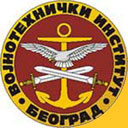 |
SCIENTIFIC-TECHNICAL INFORMATION Military Technical Institute Belgrade |
|||
|
SERBIA |
FRANCIA |
|||
|
ROUGHNESS AS MEASURE OF SURFACE QUALITY: CIVILIAN AND MILITARY APPLICATION
Nikolić m Elazar Jovan Nikolić Mirjana r Mirjana
ABSTRACT The scattering of electromagnetic waves from randomly rough surfaces has been an active research topic for many years. In recent years, the measurement of rough variations on a surface has deserved a great deal of attention. In some particular areas of industry, obtaining surface profiles with high accuracy is required. The surface is an important part of any object, man-made or natural, and it plays an important role in defining object functionality. Better tools for surface characterization are required to improve the understanding of the functionality of surfaces, and to use this new knowledge in manufacturing. The classical theoretical approaches are used to describe the interaction of optical waves with randomly rough surfaces. When the surface is smooth enough, the component of surface scattering is mirrorlike, and the angle of reflectance equals the angle of incidence. When the surface is rough the scattered radiance has an off-specular lobe of certain width. The appearance of objects in the real world is usually modeled as a combination of these two mechanisms. Industrial and military applications of scattering are analyzed. KEY WORDS: optical electronics, laser technique, electromagnetic waves, wave scattering, light scattering, rough surface, optical surface, specular reflection, diffuse scattering, roughness measurement, interferometer, profilometer, profilometry, Fourier transforms, Gaussian distribution.
|
|
Copyright ©, Naučnotehnička informacija, 2001. - www.vti.mod.gov.rs/nti Vojnotehnički institut, Ratka Resanovića 1, Belgrade, Serbia |
